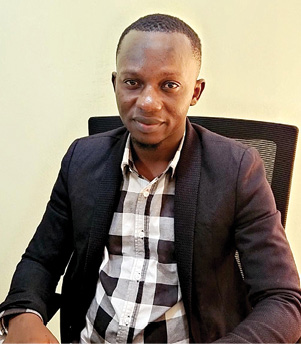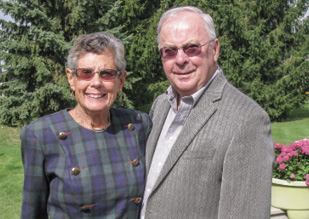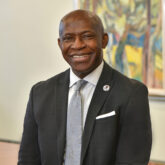
John Planz ’84, Ph.D., conducts research at the University of North Texas Health Science Center, where he is associate director of the Center for Human Identification.
University of North Texas Health and Science Center Professor John V. Planz ’84, Ph.D., offers this advice to students: “Don’t have blinders on. You never know what opportunities might come up.” This wisdom, shared by one of America’s leading forensic scientists, represents what Planz has learned from his own journey.
“Forensics?” he asks. “Never even on my radar.”
But today, Planz, who earned degrees in biology and zoology at Oswego, is the associate director of the UNT Health Science Center DNA Identity Laboratory, the largest in the country and home to the DNA database used by Texas law enforcement and the FBI to identify missing persons and victims of crime. It’s one of few laboratories in the country to test for mitochondrial DNA, a forensic casework procedure that can be critical in helping investigators evaluate all associated case information.
Working with law enforcement officials, Planz and his colleagues oversee the maintenance of a DNA database of samples of unidentified human remains and high-risk missing persons submitted from around the country. Comparative data are collected from missing persons’ effects or from close relatives. The DNA data are entered into CODIS (the Combined DNA Index System), which is available to crime laboratories nationally.
“Without this database, a body found far from home might remain unidentified,” Planz says. “Our efforts might bring closure to unsolved cases from Texas and the rest of the country.” Planz’s work on international forensic mysteries includes the identification of victims of political violence found in mass graves in Chile and cases that identify the remains of individuals enslaved by human trafficking.
PROTECTING CHILDREN
The UNTHSC administers DNA-Prokids, an international humanitarian program to identify and return abducted individuals, especially young people and children, to their families or other safe environments. DNA-Prokids provides law enforcement agencies a scientific methodology to help deter the human trafficking and illegal adoptions of children.
A case that illustrates Planz’s forensic work took place a few years ago, when human remains were located in an illegal dump in Travis County, Texas. Dr. Planz conducted statistical evaluations on the DNA extraction from a section of bone taken from the femur; then, he entered the results into the UNT Center for Human Identification database. A series of clues indicated a probable match to sisters in California, who had reported their brother missing. So, Planz and his staff analyzed the mitochondrial DNA and confirmed the identity of the missing man. He testified in court to the validity of the work done, and his contributions to the investigation helped confirm the subject as the victim of a drug-related murder.
CAMPUS EXPERIENCE
Planz, who transferred into Oswego, recalls arriving in January, opening the car door, grabbing his suitcase and having it blow away in the lakeside winds. Once settled, he worked with professors Peter Weber, Ph.D., in behavioral ecology, studying how organisms respond and react to their environment, and Al Lackey, Ph.D., a mammalogist.
He says Rice Creek Field Station was “home away from home” during his college years.
“It was the field station that really drew me to Oswego,” Planz says. “I was a teaching assistant and worked closely with ornithologist Dr. George Maxwell and Al Lackey. I learned taxidermy and helped preserve species found on the grounds or brought in by residents.”
Diann Jackson M ’77, Ph.D., assistant director at Rice Creek, recalls, “John worked with me as a student assistant. His interests were a natural fit, especially with the collections. It is personally and professionally gratifying to know that the Rice Creek involvement helped John achieve his academic and professional goals.”
Finishing requirements in December, he went on to complete a master’s degree at Shippensburg University, a Ph.D. in molecular systematics and population genetics at the University of North Texas, and post-doctoral studies at the Carnegie Museum, where collections from his doctoral work are still housed.
Planz credits his varied Oswego experience with providing him a reliable base of knowledge. “My doctoral adviser was impressed that I had such a broad background in the sciences,” he says.
After post-doc studies, Planz married, settled in Texas and accepted a forensic analyst position at the Southwestern Institute of Forensic Sciences. After several years as a director in private laboratories, he joined the team at UNTHSC, serving in a variety of roles, including teaching, curriculum design, academic advisement and distance learning administration. He conducts research in molecular evolutionary genetics of cellular energetics pathways and mentors doctoral students working on Alzheimer’s disease.
From that windy arrival in Oswego, Planz has traveled a challenging and sometimes surprising route to prominence in forensics and investigative genetics.
“I always wanted to learn everything I could and be open to possibilities,” he says. “You never know how circumstances are going to change.”
— Linda Loomis ’90 M ’97
Read more stories of Alumni in the Sciences
You might also like
More from Alumni Profiles
Astrophysicist, Yale Professor Credits Oswego with Setting His Course for Stellar Career
Astrophysicist, Yale Professor Credits Oswego with Setting His Course for Stellar Career Earl Bellinger ’12 is one stellar guy. A quick review …
BHI Alumnus from Liberia Gains World of Experience
BHI Alumnus from Liberia Gains World of Experience Otis Gbala M’23 became the first SUNY Oswego graduate who studied from Liberia …
Couple’s Loyal Support for Oswego Spans Five Decades
Couple’s Loyal Support for Oswego Spans Five Decades Marilynn “Lynn” Nagy Farrar ’61 and Neil Farrar cherish their memories of Oswego …











